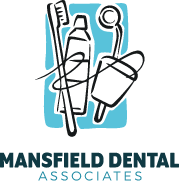In our last blog, we took a look at bruxism, a disorder in which people regularly grind their teeth or clench their jaw. In today’s blog, we’re going to focus on a related issue known as TMJ disorder, or TMD. What causes TMJ disorder and how do we offer patients treatment? Find out more about identifying and treating jaw joint disorders.
The Onset of TMD
TMJ disorder develops when the temporomandibular joints, which connect the jaw and face, become strained. The stress eventually makes the opening and closing of the mouth difficult and leads to a number of uncomfortable symptoms. The causes of jaw joint strain may include tooth loss, misalignment or malocclusion, teeth grinding, or injury to the face or jaw. Symptoms may consist of pain in the jaw or face, aches in the neck and shoulders, frequent headaches, and a popping or clicking sensation in the jaw. If you begin to experience any of these symptoms, then please see us for a diagnosis. By looking at your jaw and oral structures, as well as wear and friction on the teeth, we can choose the most appropriate course of treatment.
The Link with Bruxism
For some, untreated TMD could lead to the onset of regular teeth grinding, damaging teeth and causing serious complications and discomfort. However, if you already grind your teeth regularly, the strain on the jaw joints could lead to TMJ dysfunction. Fortunately, we have treatments that may address both issues at once. Teeth grinding could lead to tooth decay, dental infections, cracked or chipped teeth, and worn-down tooth enamel. Treating this disorder is essential for maintaining optimal oral health and avoiding the onset of pain and dental damage.
Oral Splint Treatment
An oral splint is a custom-made device that fits comfortably and is worn as the patient sleeps. We create them based on detailed impressions taken of your smile. The device will look very similar to a nightguard. When in place, the oral splint actually repositions the jaw to ease strain, combating both TMD and bruxism. The device also places a barrier between the upper and lower sets of teeth, which prevents further damage to your smile. Other treatment options could include orthodontic procedures, custom-made restorations, and muscles exercises. If you have any questions about treating TMD and bruxism, then contact our team today. Don’t live with daily discomfort, talk to our team about treatment today.
Do You Have Questions About TMD?
With our approach to preventive and general treatment, we have solutions to jaw joint disorders. For more information about addressing jaw joint strain or any of our other preventive and general treatment options, schedule a consultation by calling our dentist’s office in Mansfield, TX, today at 817-473-6227.





Recent Comments